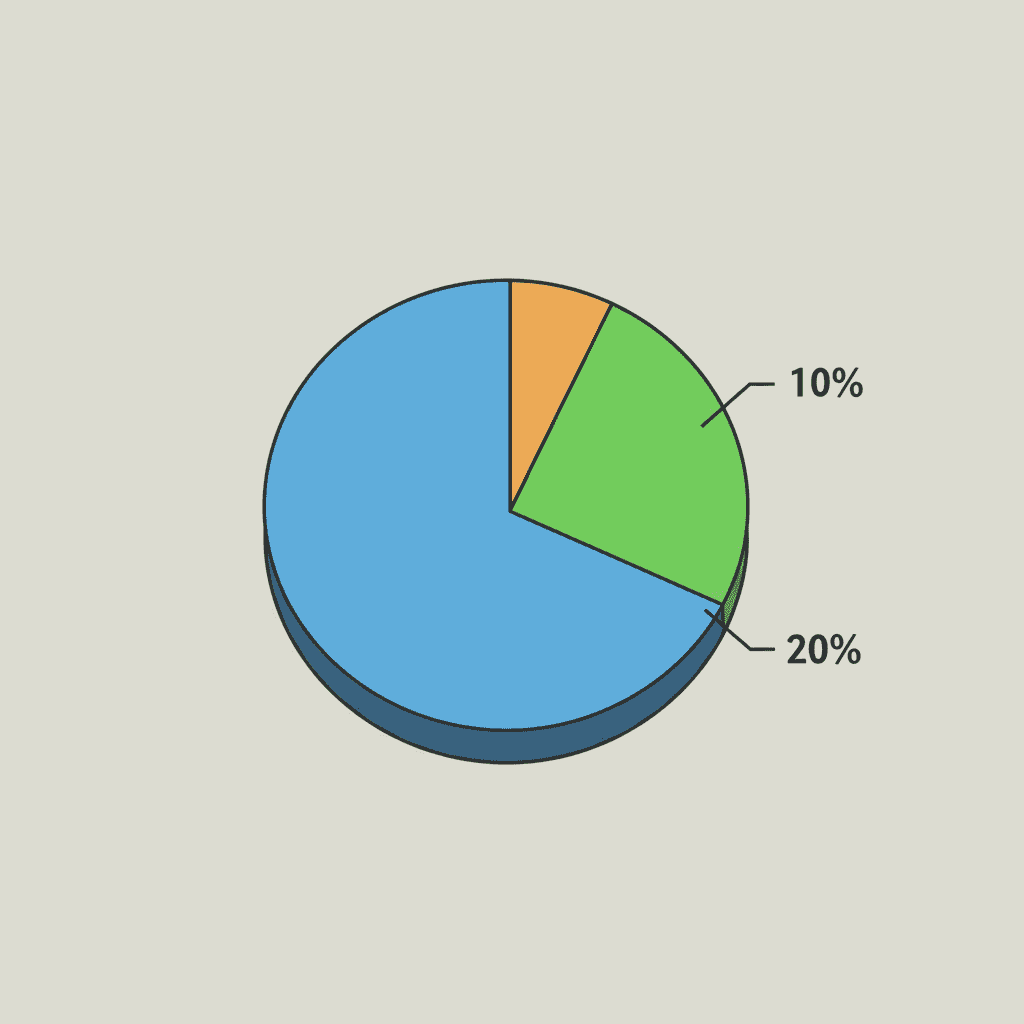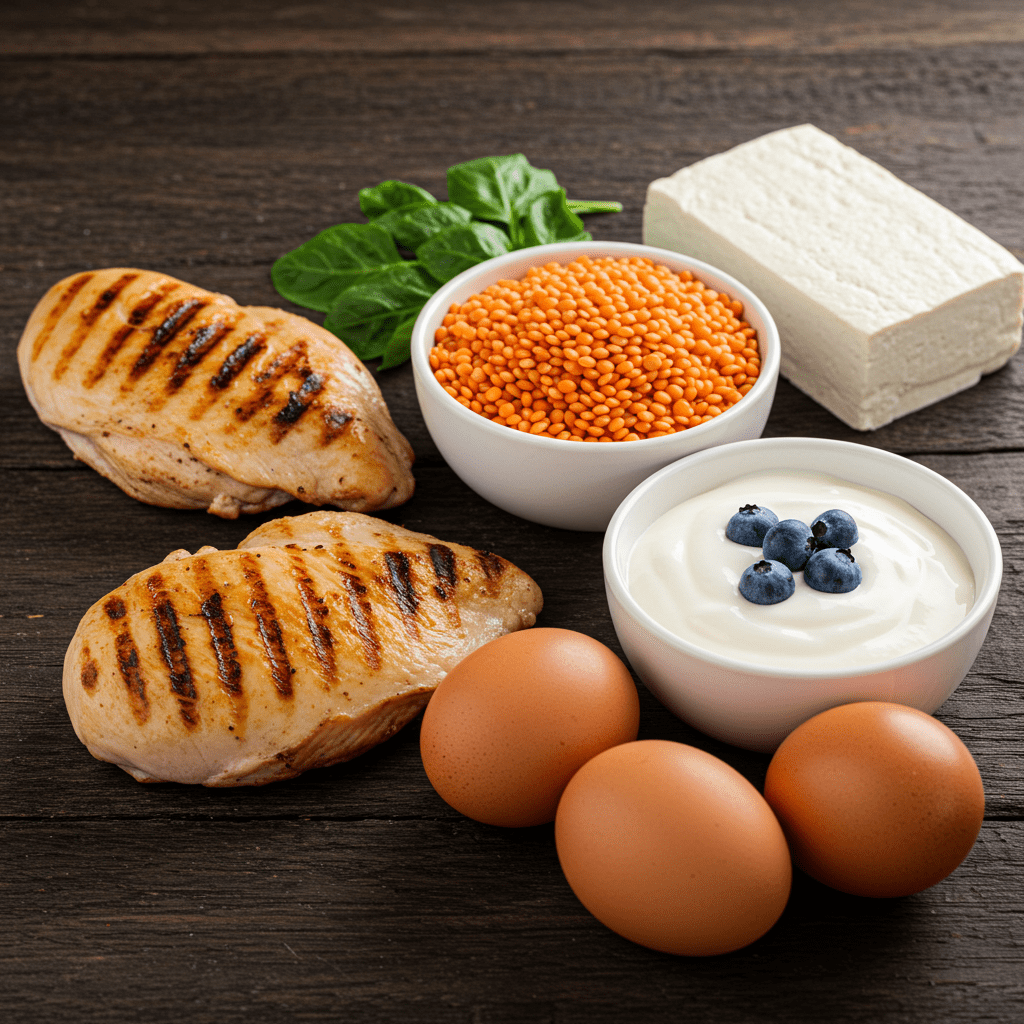Why Your Metabolism Isn’t Broken (And How to Actually Support It)

Many of my clients come to me convinced they have a ‘broken’ or ‘slow’ metabolism.
They talk about a time in their life when they could eat anything they wanted, but now feel like they gain weight just by looking at a croissant.
If this sounds familiar, I want to offer some reassurance.
As a Registered Dietitian specializing in metabolic health, I can tell you that for the vast majority of people, your metabolism isn’t broken—it’s just responding to your habits and lifestyle.
The idea of a quick ‘metabolism reset’ is tempting, but it’s a myth.
Your metabolism is a complex, dynamic system, not a switch you can flip on and off.
Instead of trying to ‘fix’ something that isn’t broken, let’s focus on what the science says actually works: supporting and strengthening your metabolic health through consistent, sustainable habits.
Let’s dive in.
What Really Governs Your Metabolic Rate?

Before we can support our metabolism, it helps to understand what it’s doing all day.
Think of your total daily energy expenditure (TDEE) as a bucket filled by three main sources.
As a dietitian, I explain it to my clients like this: 1.
Basal Metabolic Rate (BMR): This is the headliner, accounting for 60-70% of your daily calorie burn.
It’s the energy your body uses just to stay alive—powering your brain, heart, lungs, and other organs, even when you’re resting on the couch.
Things like your age, genetics, and body composition (how much muscle you have) play a big role here.
2.
Thermic Effect of Food (TEF): Did you know you burn calories just by eating?
TEF is the energy used to digest, absorb, and metabolize the food you consume.
It makes up about 10% of your total energy expenditure.
Interestingly, your body uses significantly more energy to break down protein than it does for fats and carbs.
3.
Activity Thermogenesis: This is all the energy you burn from movement.
It’s divided into two categories: purposeful exercise (like a gym session or a run) and Non-Exercise Activity Thermogenesis (NEAT).
NEAT includes everything else—walking the dog, typing, fidgeting, doing chores.
For many people, NEAT can account for a much larger portion of daily calorie burn than their actual workout.
Why Does It Feel Like My Metabolism Is Slowing?

This is the question I hear most often.
Groundbreaking research published in Science in 2021 by Pontzer et al.
analyzed data from over 6,600 people and found that metabolic rates are surprisingly stable from age 20 to 60.
So if it’s not age, what’s going on?
The perceived slowdown is often due to lifestyle factors, not a fundamental change in your metabolic machinery.
The two biggest culprits are: Progressive Muscle Loss (Sarcopenia): Starting in our 30s, we naturally begin to lose muscle mass if we aren’t actively working to maintain it.
Since muscle is more metabolically active than fat (meaning it burns more calories at rest), losing it gradually lowers your BMR.
This is the single most significant factor for most people.
Chronic Undereating and Yo-Yo Dieting: When you drastically cut calories, your body adapts to conserve energy—it becomes more efficient and burns fewer calories to perform the same tasks.
This ‘metabolic adaptation’ was famously documented in a study on ‘The Biggest Loser’ contestants.
A 2016 study published in Obesity found that years after the show, their metabolisms had not recovered and remained suppressed, making weight regain almost inevitable.
This is why sustainable approaches are so critical.
How to Build a Stronger, More Efficient Metabolism

Instead of a ‘reset,’ let’s focus on building a more robust and efficient metabolic engine.
These five evidence-based strategies are what I recommend to my clients for long-term success.
1.
Prioritize Protein at Every Meal Protein is a metabolic powerhouse.
Due to its high Thermic Effect of Food (TEF), your body can burn up to 30% of its calories just during digestion.
Research, like a 2008 review in the American Journal of Clinical Nutrition, confirms that higher protein intake increases satiety, helping you feel fuller for longer.
I advise my clients to aim for 20-30 grams of protein per meal.
This isn’t about extreme diets; it’s about anchoring your meals with a quality protein source, like a healthier creamy turkey alfredo or a breakfast designed to be filling, like these banana blueberry muffins.
2.
Build and Maintain Your Muscle Mass This is non-negotiable for metabolic health.
Strength training is the most effective way to build and maintain metabolically active muscle.
You don’t have to become a bodybuilder.
Two to three full-body resistance training sessions per week can make a huge difference.
Focus on compound movements like squats, deadlifts, push-ups, and rows, which engage multiple muscle groups at once for the biggest impact.
3.
Increase Your Daily Movement (NEAT) Your one-hour workout is great, but what you do the other 23 hours matters more.
Increasing your NEAT is a game-changer.
Take short walking breaks every hour, choose the stairs, park farther away, stand while on the phone, or do some light stretching during TV commercials.
These small bouts of activity accumulate and can significantly increase your total daily calorie burn without you ever stepping foot in a gym.
4.
Make High-Quality Sleep a Non-Negotiable Poor sleep is a metabolic disaster.
H.
Chan School of Public Health notes that sleep deprivation disrupts the hormones that regulate appetite—it increases ghrelin (the ‘I’m hungry’ hormone) and decreases leptin (the ‘I’m full’ hormone).
This hormonal imbalance drives cravings for high-calorie, sugary foods.
Aim for 7-9 hours of quality sleep per night to keep these crucial hormones in balance.
5.
Hydrate for Better Energy Production Every single process in your body, including metabolism, requires water.
According to the Mayo Clinic, water is essential for metabolizing fats and carbohydrates.
Even mild dehydration can cause your metabolism to become sluggish.
Start your day with a large glass of water and keep a water bottle with you as a visual reminder.
Your goal should be consistently pale, straw-colored urine.
What’s the One Thing to Remember?

If you take away just one thing from this article, let it be this: your daily choices have far more power over your metabolic health than you think.
It’s not about a magical ‘reset’ or punishing yourself with extreme diets.
It’s about consistently making small, supportive choices that add up over time.
Be patient with your body.
Focus on building strength, nourishing yourself with whole foods, moving in ways you enjoy, and getting adequate rest.
That is the true secret to a well-supported metabolism for life.
Conclusion
Ultimately, the conversation around metabolism needs to shift from ‘fixing’ what’s broken to ‘supporting’ a system that is designed to adapt.
By focusing on protein intake, building muscle, increasing daily movement, prioritizing sleep, and staying hydrated, you are providing your body with the tools it needs to function at its best.
These aren’t quick fixes; they are the fundamental pillars of lasting health and a strong, efficient metabolism.
